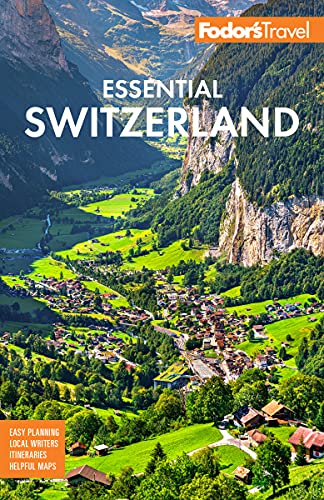Lake Luzern
Towns where travelers used to stop to brush the dust off their clothes have turned into full-service spas with culinary temples, hiking trails, and docks for pleasure boats. What was once a part of the long route from Germany to Italy is now a destination in its own right.
The many inlets of Lake Luzern that stretch all over the region vary in size, depth, and wind conditions. They are at some points flanked by gentle green hillsides and at others by steep mountain cliffs. The lake's lower end is home to gusting winds that thrill windsurfers, and the quiet middle basin is perfect for waterskiing. Boats steam along from the top of the lake to the bottom, carrying lunching locals and tourists snapping shots of imposing peaks that loom high above. Endless trails snake around the region, often with altitude differences of 1,000 feet over just a few miles, and secondary (and some primary) roads along its shores are narrow and winding—the perfect excuse to rent a convertible.
Best Time to Go
Although misty spring or fall can be romantic, the low clouds that winter brings usually obscure the scenery. It's summer you want: hiking trails are free of snow, the lake is a comfortable 73ºF (23ºC), restaurant terraces are open, cowbells clang in the distance, and the sky is so blue you're suspicious.
Ways to Explore
By Boat
If you have the time, the best way to see the sights is on the water. Short one-hour cruises offer a new angle on the area you're in, but to get the full Technicolor panorama of the lake's character, take the 3½-hour tour of the whole lake: it heads from the hilly and small-scale but busy series of inlets dotted with impressive villas near Luzern; through the quieter basin surrounded by the spa towns of Bürgenstock, Weggis, and Vitznau; to the wilder Urnersee between Brunnen and Flüelen, where the cliffs rise precipitously out of the depths of the lake and high into the sky.
By Bike
Whether you prefer an easy ride through the green pastures of cow country or are ready to tackle a steep mountain pass, you'll find both options here, and all levels in between. For easy trips, check out the good network of official bike paths off the main thoroughfares. For something with more altitude, you may have to share a narrow twisting road with a car or two from time to time.
By Foot
Switzerland has such an extensive network of hiking trails that you can be sure of getting to wherever you want. Thousands of official yellow Wanderweg (trail) signposts can be found all over the country, so you always know where you're going and how long it will take to get there. The map system is also very comprehensive and detailed, so feel free to go exploring up Mt. Pilatus, along the lake, or into the green fields of the lowlands. History buffs will appreciate the Swiss Path, which winds around the Urnersee and passes sites significant to the birth of the nation.
Best Photo Ops
If you’re in Luzern early in the morning on a clear day, head for the Seebrücke. The lighting will be ideal for postcard-perfect shots of the Chapel Bridge, the Water Tower, and Mt. Pilatus. You may even catch some fishers trying their luck in the River Reuss. For lake and mountain panoramas, wait until later in the day and walk along the Nationalquai for the best-lighted views. To get the Old Town rooftops in the picture, you can gain altitude via the old city ramparts, called the Museggmauer.




